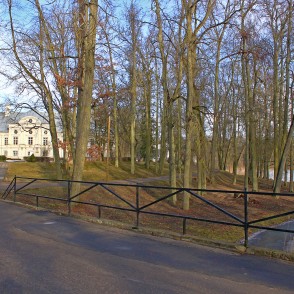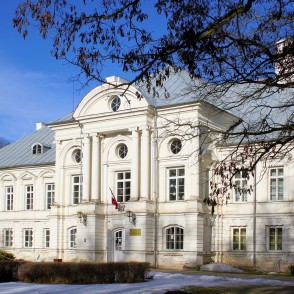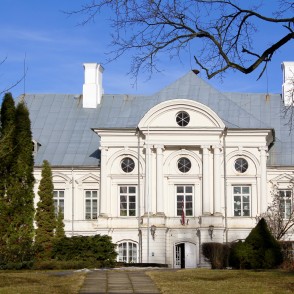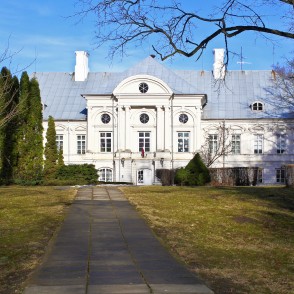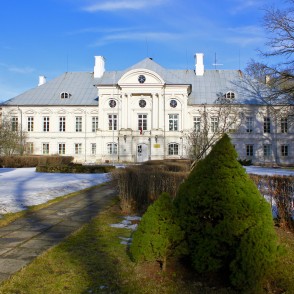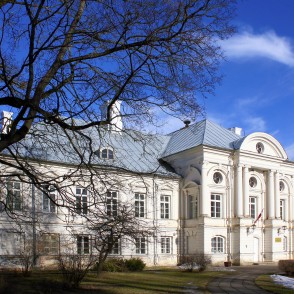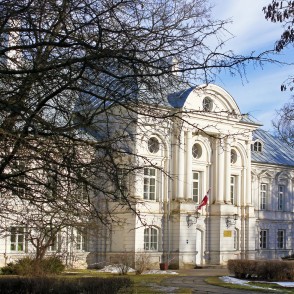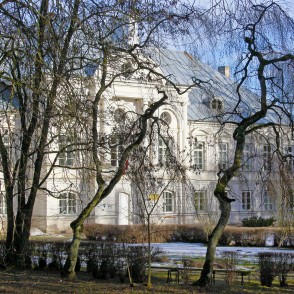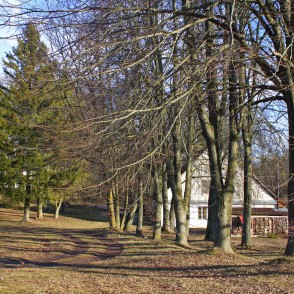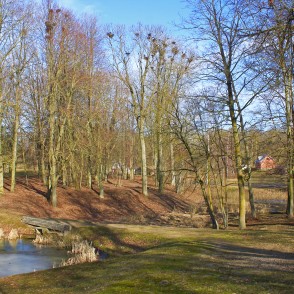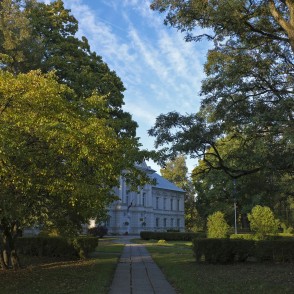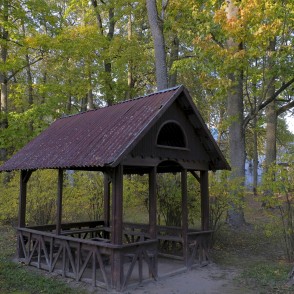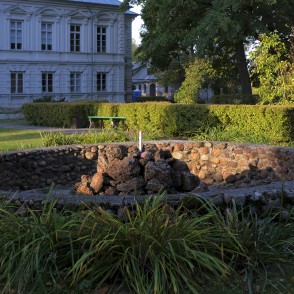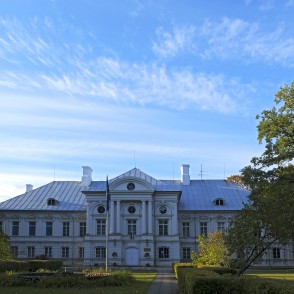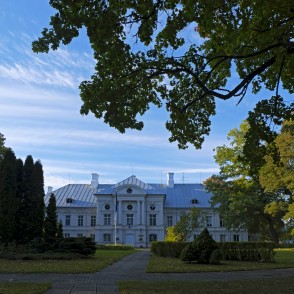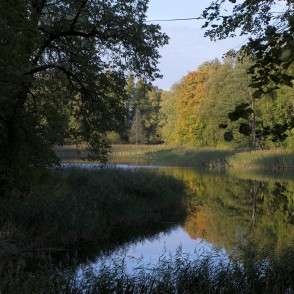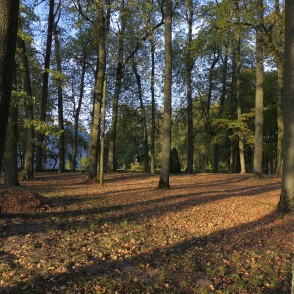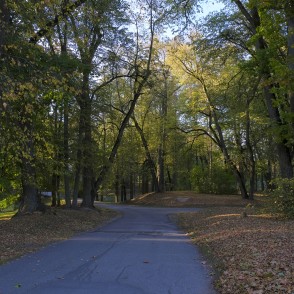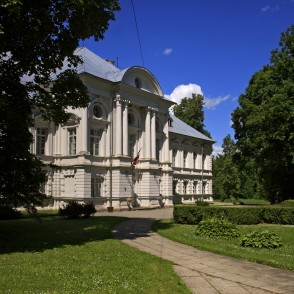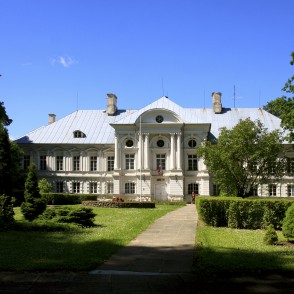Duke's hunting residence "Green Manor" is a unique architectural example of the Duchy of Courland. The building is relatively well preserved and has not been damaged or burned. There are historically significant interior elements in the manor that date back to the middle of the 18th century and in the 19th century. Despite the loss and reconstruction in the middle of the 20th century, the building still contains a huge amount of significant original architectural elements, which is rarity in other Latvian manors.
The evidence from the 18th century is the interior decoration ceiling cornice in the halls, vaulted ceiling decoration of the lobby and parquet fragments in some rooms. Unique wall paintings have been revealed under the layers of paint in the central hall. The 19th century interior examples are the ceiling paintings, which depict illusory frames with Empire and Renaissance motifs, stair baluster handrails and a marble fireplace built in late rococo style.
The Park of the manor is a delight with its calm, quiet and shady atmosphere.
Currently Zaļenieki Manor is home to educational institution for professional educational programmes.
www.visit.jelgava.lv/en
Zaļenieki Manor, also called Zaļā Manor because of the German word Grünhof, is a manor house in the historical region of Zemgale, in Latvia. Surrounded by a 27-hectare landscape park with ponds and lakes, it was one of the oldest properties of the Livonian Order in Zemgale. Its architecture enables the manor to be evaluated as the first and greatest early classical model in Courland.
History
After the collapse of the Livonian Order in 1562, the manor became property and a popular hunting spot for Gotthard Kettler, first Duke of Courland and Semigallia. In 1766, Duke Ernst Johann von Biron signed the first order for the construction of the new manor. The initial architectural design is supposed to have been the work of Italian-born Russian architect Bartolomeo Rastrelli, who died in 1771 before completion of the project. Construction began in 1768 and finished in 1775 under the supervision of Rastrelli's Danish-born assistant Severin Jensen, which explains the influence of both Late Baroque and Classicism architecture in the completed manor house.
In 1795, when the Duchy of Courland and Semigallia was incorporated into the Russian Empire, the Russian Emperor Paul I gave Zaļenieki Manor and all the estate to his brother-in-law Alexander of Württemberg. In 1850 his sons sold the property to the landlord of Bornsminde Manor Alexis von Scheping. His wife Aleksandra Lieven of Mežotne, after her husband's death, passed the estate over to the hands of the Baltic-German Count Karl Theodor von Medem of Eleja at the end of the nineteenth century. After the Latvian agrarian reforms in 1920, the building was nationalized and turned into a vocational secondary school, which continues in operation as of today.
Restoration work under the new stucco layers in the hall and several other rooms on the second floor revealed wall paintings. The facade of the Zaļenieki Manor has not undergone any major changes since the eighteenth century. However, the interior of the manor was redesigned and refitted from 1866 to 1868. The complex used to consist of more than 30 buildings, including stables and accommodation for the servants.

